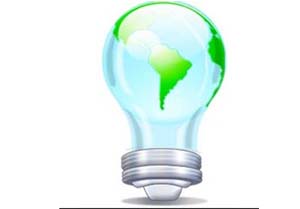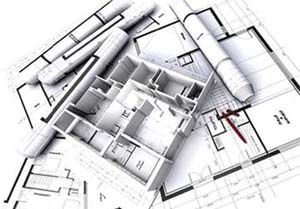 |
|
| Appunti tecniche |
|
 |
|
| Appunti tecniche |
|
| Visite: 1545 | Gradito: |
Leggi anche appunti:Le mareeLe maree Sono oscillazioni periodiche del livello della superficie dell'oceano Regolazione PID mediante GNC toolboxRegolazione PID mediante GNC toolbox Come esposto nei capitoli precedenti Sistema di controllo codice PIN per CASSAFORTE ELETTRONICASistema di controllo codice PIN per CASSAFORTE ELETTRONICA Descrizione: Questo |
 |
 |
Energy generation has become an urgent, strategic issue at the global scale. At present, about 80% of world electric energy is produced from thermal plants making use of fossil sources (oil, gas, coal). The economical, geopolitical and environmental problems related to such sources are becoming every day more and more evident. Nuclear plants have their own problems related to security aspects and radioactive waste management. For these reasons it is of primary importance for the scientific community to explore and support new renewable energy technologies, able to provide more efficient solutions than the existing ones to the severe energy shortage of the planet.
Today's
technology is just capable of scratching the surface, in few favourable points,
of the enormous energy field contained into the wind. Wind turbines cannot
reach higher and touch altitude wind, they are already close to their dimensional
limits: difficultly hubs can be positioned at more than
To reach altitude wind and
exploiting its higher kinetic energy, the Kite Gen project starts from a
radical change of perspective: no longer heavy and static plants like current
wind turbines, but instead light, dynamic and intelligent ones. In the air, to
subtract energy from the wind at an altitude of 800 /
A clear advantage of this technology is visually suggested in the illustration below. The essence of the Kite Gen concept is comparable with a wind turbine, whose most efficient part are the wing tips - in red - where the highest speeds are reached; but only the truly needed components remain, high speed wings and the generator, the latter conveniently moved to the ground. The resulting structure, base foundation included, is much lighter and cheaper. Moreover the operative height can be adjusted according to wind conditions.
|
|
The KSU (Kite Steering Unit) is the unit that allows to automatically pilot a power kite or an array of power kites over a predefined flight path. The power kite is manouvered by differentially unrolling and recovering the two lines on two winches controlled by engines.
Each Kite Gen power plant is composed by several KSUs pulled by the power kites along a ring-shape circular path at ground level. At the very core of the project stays the software that, receiving data also from on-board avionic sensors, autonomously pilots the power kites, so that their flight patterns can be controlled, synchronized and normally directed to maximise the production of energy.
With such configuration,
a single Kite Gen power plant is able to intercept very large amounts of
altitude wind. In the illustration below is shown the area swept by a plant
with a circular
path of

Energy production takes place in a distributed manner at each unit, thus avoiding unmanageable sizes of the electrical equipment.
The modular
approach makes possible to build very powerful Kite Gen plants, where as the
diameter at ground level of the circular path grows, the area swept increases to the
square and therefore the total wind power. 100 MW Kite Gen power plants, not
much larger than the illustrated example, diameter at ground level of the circular
path
of approx.
Wind power generation methods can be all labelled as 'clean' technology, with zero emissions of CO2, of other green house gases, of ashes and particulate matter. The positive effect on the environment, coming from the -quickest and most efficient possible- substitution of the current polluting technologies based on non renewable sources, is the main drive behind Kite Gen Research.
It must be added that Kite Gen technology, when compared to wind turbines, much as it foresees a lower cost of energy produced, in the same way returns improved results in terms of energy balance, that is the calculation of how long a power plant must operate to produce the amount of energy that will use in its entire life cycle (from raw material extraction to final disposal).
The environmental impact should be then analyzed not only on a global scale, but also related to the localization of each power plant, where the following main factors arise:
The aerial
part, since the power kites fly at an altitude of 800 /
The ground systems are concentrated along a circular path, while the vast majority
of the occupied area is available for agricultural activities. The visual
impact can be enhanced by specific architectural design; it must be noted
anyway that, equal the installed power, land use is lower than what required by
current wind technologies, with the possibility to concentrate the needs into
few large installations.
Power kites project little or no shadow, the Sun tends to completely dissolve the shadow of any object if positioned at a distance from the ground larger than approx. 100 times its width.
Several
studies suggest that overall bird deaths due to wind turbines are much less
than those related to other anthropic causes (power lines, pesticides, cars,
buildings with windows, etc.).
Specific and detailed analysis will have to be conducted for the Kite Gen power
plants, but the higher operative height of the power kites appears to be a
positive factor, considering also that the speed of the lines' movement
decreases as they get closer to the steering units at ground level.
While the
noise produced by the aerial part is negligible, the ground systems can be
compared to a low speed railway with good soundproofing (50 dB at
 |
| Appunti su: |
|
| Appunti costruzione |  |
| Tesine Gestione |  |
| Lezioni Ingegneria tecnico |  |